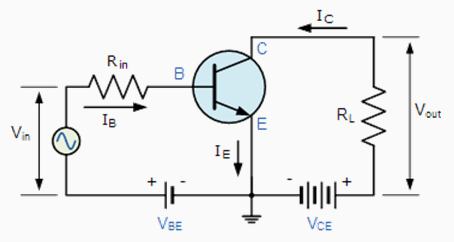In a transistor if #I_c/I_e=alpha# and #I_c/I_b=beta#, if #alpha# varies between #(20)/(21)# and #(100)/(101)#, then the value of #beta# lied between?
1 Answer
Explanation:
Representative circuit in Common emitter amplifier configuration is given below

Given is the ratio of
And the ratio of
From above expressions we have
In this configuration, the current flowing out of the transistor must be equal to the currents flowing into the transistor. As such we have
#I_e = I_c + I_b# .....(2)
To have a combined the expression for
#=>beta=alpha/(1-alpha)#
For
Again for
.-.-.-.-.-.-.-.-.-.-.-.-.-.-.-.-.-.-.-
Note: value of
and typically,
